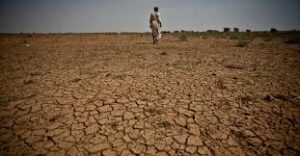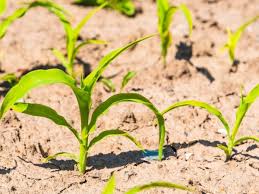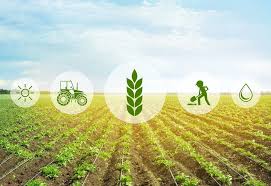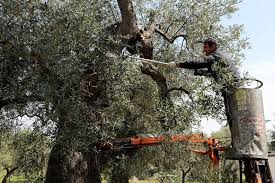Climate Change and Food Security: A Looming Global Crisis
As the world grapples with the escalating impacts of climate change, one of the most pressing and complex challenges we face is ensuring food security for a growing global population. Climate change is not only a threat to the environment but also a significant driver of food insecurity, affecting the availability, accessibility, and quality of food worldwide. As temperatures rise, weather patterns shift, and extreme events become more frequent, the stability of our global food systems is increasingly at risk. Addressing this crisis requires a concerted global effort to mitigate climate change, adapt agricultural practices, and reimagine our approach to food production and distribution.
The Intersection of Climate Change and Food Security
Food security is defined by the United Nations as the state in which all people, at all times, have physical and economic access to sufficient, safe, and nutritious food that meets their dietary needs and food preferences for an active and healthy life. However, climate change is disrupting every aspect of this definition, from food production and distribution to consumption and nutrition.
- Impact on Food Production: Climate change is altering the conditions under which crops are grown, livestock is raised, and fish are harvested. Rising temperatures, changing precipitation patterns, and the increased frequency of extreme weather events such as droughts, floods, and hurricanes are making it more difficult to produce food. In many regions, these changes are leading to reduced crop yields, threatening the livelihoods of farmers and the food supply for entire communities.
- Water Scarcity: Water is a critical resource for agriculture, and climate change is exacerbating water scarcity in many parts of the world. As temperatures rise, evaporation rates increase, and changing rainfall patterns can lead to prolonged droughts. These conditions make it harder to irrigate crops, particularly in regions that are already water-stressed. The depletion of freshwater resources not only reduces agricultural productivity but also heightens competition for water between different sectors, including domestic use, industry, and energy production.
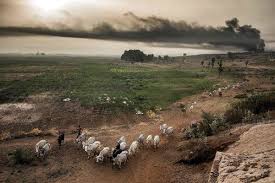
- Soil Degradation: Climate change is contributing to soil degradation through processes such as erosion, desertification, and salinization. Healthy soil is essential for crop growth, but rising temperatures and changing rainfall patterns can degrade soil quality, reducing its ability to support agriculture. In arid and semi-arid regions, prolonged droughts and poor land management practices can lead to desertification, turning once-fertile lands into barren deserts.
- Fisheries and Aquaculture: The impact of climate change is also being felt in the world’s oceans and freshwater bodies, where warming waters, ocean acidification, and changes in currents are disrupting marine ecosystems. Many fish species are migrating to cooler waters, which can affect the livelihoods of fishing communities and reduce the availability of fish as a food source. In addition, the increasing frequency of extreme weather events can damage aquaculture infrastructure, leading to losses in fish farming.
Vulnerable Populations at Risk
The effects of climate change on food security are not evenly distributed. Vulnerable populations, particularly in developing countries, are disproportionately affected. Smallholder farmers, pastoralists, and fishing communities, who rely heavily on natural resources for their livelihoods, are among the most at risk. These groups often have limited access to resources, technology, and financial services, making it difficult for them to adapt to changing environmental conditions.
In many developing countries, food prices are closely tied to local agricultural production. When climate-related disruptions occur, such as a failed harvest or a fishery collapse, food prices can spike, making it difficult for low-income households to afford basic necessities. This can lead to increased hunger, malnutrition, and social unrest, particularly in regions already facing economic and political instability.
Moreover, climate change exacerbates existing inequalities, with women and children often bearing the brunt of food insecurity. Women, who make up a significant portion of the agricultural workforce in many developing countries, are frequently excluded from decision-making processes and have less access to resources such as land, credit, and technology. This limits their ability to adapt to climate change and secure food for their families.
The Global Food System Under Strain
The impacts of climate change on food security are not confined to developing countries. The global food system, which is highly interconnected, is also under strain. Climate-related disruptions in one part of the world can have ripple effects across global markets, affecting food prices, trade flows, and supply chains.
For example, extreme weather events in major food-producing regions can lead to shortages of key commodities such as wheat, rice, and maize. These shortages can drive up global food prices, affecting consumers in both developed and developing countries. In addition, climate change can disrupt the transportation and distribution of food, particularly in regions that rely heavily on imports. This can lead to supply chain bottlenecks, food waste, and further price volatility.
The global food system is also contributing to climate change. Agriculture is a significant source of greenhouse gas emissions, particularly from livestock production, deforestation, and the use of synthetic fertilizers. As demand for food continues to grow, driven by population growth and changing dietary preferences, the challenge of reducing the carbon footprint of food production becomes increasingly urgent.
Adapting to Climate Change: Building Resilient Food Systems
To address the challenge of climate change and food security, we must build more resilient and sustainable food systems. This requires a multi-faceted approach that includes mitigation, adaptation, and innovation.
- Climate-Smart Agriculture: One of the most promising strategies for addressing the impact of climate change on food production is the adoption of climate-smart agriculture (CSA). CSA involves practices that increase agricultural productivity, enhance resilience to climate change, and reduce greenhouse gas emissions. Examples include the use of drought-resistant crop varieties, improved irrigation techniques, agroforestry, and sustainable land management practices. By integrating these practices into farming systems, we can help farmers adapt to changing environmental conditions while also contributing to climate change mitigation.
- Diversification of Food Sources: Diversifying food sources is another key strategy for building resilience. This includes promoting the cultivation of a wider variety of crops, including traditional and indigenous species that are often more resilient to local climate conditions. It also involves supporting sustainable fisheries and aquaculture practices that can provide alternative sources of protein as marine ecosystems are affected by climate change.
- Reducing Food Waste: Food waste is a significant issue in the global food system, with an estimated one-third of all food produced for human consumption being lost or wasted. Reducing food waste is an essential component of building a more sustainable food system. This can be achieved through better storage, transportation, and processing technologies, as well as consumer education on the importance of minimizing waste.
- Strengthening Social Safety Nets: To protect vulnerable populations from the impacts of climate change on food security, it is essential to strengthen social safety nets. This includes providing access to food assistance programs, improving access to healthcare and education, and ensuring that all individuals have the resources they need to adapt to changing conditions. Social safety nets can help buffer the impacts of food price volatility and provide a safety net for those most at risk of food insecurity.
- Investing in Research and Innovation: Continued investment in research and innovation is critical for developing new technologies and practices that can help address the challenges of climate change and food security. This includes research on climate-resilient crops, sustainable farming practices, and new approaches to food production, such as vertical farming and lab-grown meat. By investing in innovation, we can develop solutions that not only address the immediate challenges of climate change but also contribute to a more sustainable and resilient food system in the long term.
The Role of Global Cooperation
Addressing the intersection of climate change and food security requires global cooperation. No single country can tackle these challenges alone, and international collaboration is essential for sharing knowledge, resources, and best practices. Global initiatives, such as the Paris Agreement and the United Nations Sustainable Development Goals, provide frameworks for countries to work together to mitigate climate change and ensure food security for all.
In addition, global trade policies must be aligned with the goals of food security and sustainability. This includes promoting fair trade practices, reducing barriers to the flow of food and agricultural goods, and supporting the livelihoods of smallholder farmers and producers around the world.
A Call to Action
The challenges posed by climate change to food security are daunting, but they are not insurmountable. By taking bold action now, we can build more resilient and sustainable food systems that can withstand the impacts of climate change and ensure that all people have access to the food they need to live healthy and productive lives.
This requires a collective effort from governments, businesses, farmers, consumers, and civil society. We must all play our part in reducing greenhouse gas emissions, promoting sustainable agricultural practices, and supporting those most vulnerable to food insecurity. The time for action is now, and the stakes could not be higher. Climate change is not just an environmental issue; it is a human issue, and the future of our food security depends on the choices we make today.
The Path Forward: Transforming Food Systems for a Sustainable Future
As we confront the dual challenges of climate change and food security, the path forward demands a transformation of our global food systems. This transformation must be guided by principles of sustainability, resilience, and equity, ensuring that our food systems can meet the needs of present and future generations without compromising the health of our planet.
1. Promoting Sustainable Agriculture Practices
Sustainable agriculture is at the heart of transforming our food systems. This involves adopting farming practices that maintain or enhance soil health, conserve water, and reduce reliance on chemical inputs. Regenerative agriculture, which focuses on restoring soil health and biodiversity, is a promising approach. Techniques such as crop rotation, cover cropping, reduced tillage, and agroforestry can help sequester carbon in the soil, improve water retention, and increase resilience to climate change.
In addition to regenerative practices, the promotion of organic farming and integrated pest management can reduce the environmental impact of agriculture. By minimizing the use of synthetic pesticides and fertilizers, these practices contribute to healthier ecosystems and reduce pollution of water sources.
2. Enhancing Food System Resilience
Building resilience into our food systems is essential to cope with the increasing unpredictability brought on by climate change. This includes diversifying crops and livestock to reduce dependency on a narrow range of species that may be vulnerable to climate-related stresses. It also involves developing and adopting crop varieties that are more resilient to extreme weather conditions, such as drought-resistant or flood-tolerant crops.
Resilience also means improving supply chain robustness. Shortening supply chains by promoting local and regional food systems can reduce vulnerability to global disruptions and reduce the carbon footprint of food transportation. Supporting small-scale farmers and local food enterprises helps to build more resilient communities and economies.
3. Reducing the Environmental Footprint of Food Production
The environmental impact of food production, particularly in terms of greenhouse gas emissions, must be addressed to achieve sustainable food security. Livestock production is a significant source of methane emissions, and reducing the environmental footprint of meat production is critical. This can be achieved through improved livestock management practices, such as better grazing techniques and methane capture technologies. Additionally, shifting towards plant-based diets can reduce demand for resource-intensive animal products and lower overall emissions.
Innovation in food production, such as the development of lab-grown meat and alternative protein sources like insects and algae, also offers potential solutions for reducing the environmental impact of our diets. These technologies are still in their early stages but could play a significant role in meeting global food demand sustainably.
4. Integrating Climate Adaptation into Food Policies
Governments have a crucial role to play in integrating climate adaptation into food and agricultural policies. This includes providing support for farmers to adopt climate-smart practices, investing in research and development for climate-resilient crops and technologies, and ensuring that agricultural policies promote sustainability and resilience.
Policy frameworks should also address the social dimensions of food security, ensuring that vulnerable populations have access to food and resources to adapt to climate change. This includes strengthening social safety nets, improving access to markets for smallholder farmers, and promoting gender equity in agriculture.
5. Fostering Global Collaboration and Innovation
Global collaboration is essential for addressing the interconnected challenges of climate change and food security. International organizations, governments, and the private sector must work together to share knowledge, coordinate efforts, and invest in innovative solutions. This includes supporting global research initiatives, such as the development of climate-resilient crop varieties and sustainable farming practices that can be adapted to different regions and climates.
Innovation in technology and data management can also play a key role in transforming food systems. Precision agriculture, which uses data and technology to optimize farming practices, can increase efficiency and reduce waste. Digital platforms can connect farmers to markets, provide access to real-time weather information, and offer training and resources for climate adaptation.
6. Empowering Communities and Consumers
Empowering communities to take an active role in building sustainable food systems is crucial. This includes supporting community-led initiatives, such as urban farming, community gardens, and local food cooperatives. These initiatives not only increase access to fresh, healthy food but also strengthen social bonds and build community resilience.
Consumers also have a powerful role to play in driving change. By making informed choices about the food they buy and consume, individuals can support sustainable food systems. This includes choosing locally produced and seasonal foods, reducing food waste, and adopting more plant-based diets. Consumer demand for sustainable products can drive change in the food industry, encouraging producers to adopt more environmentally friendly practices.
A Vision for the Future: A Sustainable and Equitable Food System
The transformation of our food systems in response to climate change is not just about avoiding disaster; it is about creating a better future for all. A sustainable and equitable food system is one that nourishes people, supports livelihoods, and protects the environment. It is a system that values diversity—in crops, in diets, and in cultures—and promotes resilience at every level, from the farm to the global marketplace.
Achieving this vision will require unprecedented cooperation, innovation, and commitment from all sectors of society. It will require rethinking how we produce, distribute, and consume food, and it will require us to prioritize the health of our planet and the well-being of all people.
The stakes are high, but the opportunity for positive change is enormous. By taking bold action now, we can create food systems that are not only resilient to the challenges of climate change but also capable of nourishing a growing global population in a way that is just and sustainable. The future of food security—and indeed, the future of our planet—depends on the choices we make today. Let us choose a path that leads to a sustainable, equitable, and food-secure world for all.

